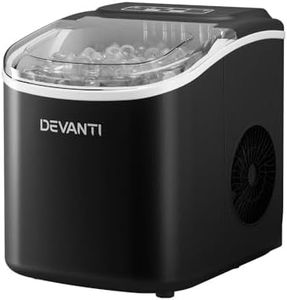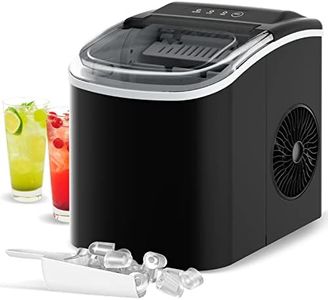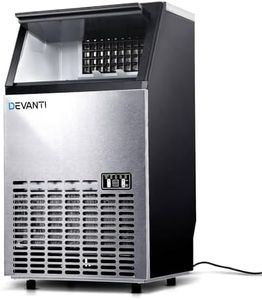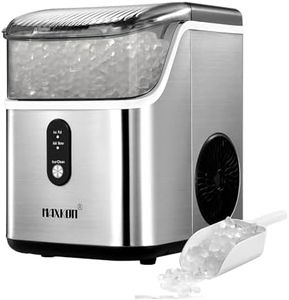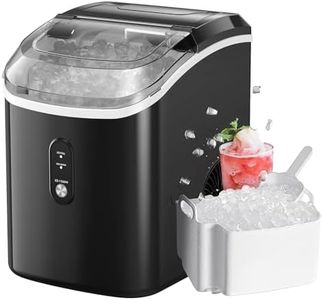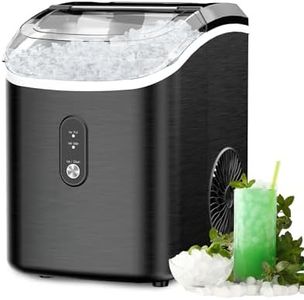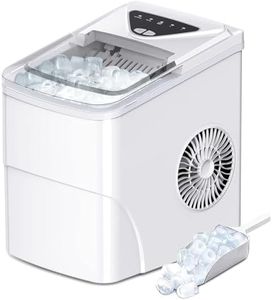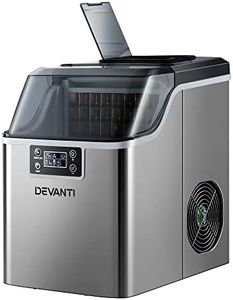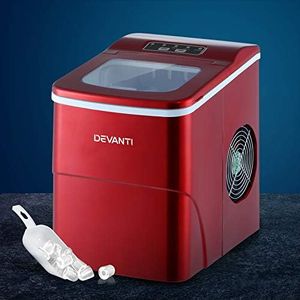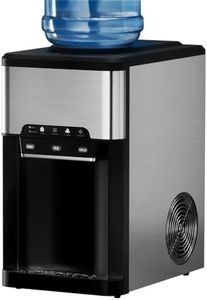We Use CookiesWe use cookies to enhance the security, performance,
functionality and for analytical and promotional activities. By continuing to browse this site you
are agreeing to our privacy policy
10 Best Countertop Ice Machines
From leading brands and best sellers available on the web.By clicking on a link to a third party's website, log data is shared with that third party.
Buying Guide for the Best Countertop Ice Machines
Choosing the right countertop ice machine can make a big difference in how you enjoy cold drinks at home, parties, or in small offices. These machines are designed to be compact and efficient, fitting easily on your countertop without taking up too much space. When looking for the right model, it's important to consider how much ice you'll need, what type of ice you prefer, and how easy the machine is to use and maintain. Taking a close look at the key specifications will help ensure you select a machine that meets your needs and fits seamlessly into your daily routine.Ice Production CapacityIce production capacity is the amount of ice a machine can produce in a 24-hour period, typically measured in pounds. This spec is crucial because it tells you whether the machine can keep up with your demand. Lower capacity machines (15-20 lbs/day) are best for personal or small household use, while mid-range machines (20-30 lbs/day) suit small gatherings or family use. Higher capacity models (over 30 lbs/day) are ideal for frequent large parties or small office settings. To choose the right capacity, think about how often you’ll use ice and in what volumes—occasional use at home usually needs less, while regular entertaining or group use will require more.
Ice Size and ShapeThe size and shape of ice, such as bullet, nugget, or cube, affects how quickly ice chills your drink and how it feels to chew or use. Most machines offer one or two options, with bullet-shaped being very common for quick cooling, nugget for chewing, and cubes for slow melting. Smaller ice melts faster and is good for smoothies, while larger pieces are better for sipping drinks. Your choice should depend on whether you like to chew ice, want to cool drinks quickly, or need ice that lasts longer in a glass.
Cycle TimeCycle time is how fast the machine can make a batch of ice, usually measured in minutes per cycle (often between 6-15 minutes). Faster cycle times mean you'll have more ice available quickly, which is essential during parties or hot days. Slower machines might be fine for occasional use where you don’t need ice immediately. Consider your patience and usage scenarios: if you host often or need ice quickly, go for shorter cycle times; if you use ice casually, longer cycle times are acceptable.
Water Reservoir SizeThe water reservoir is the compartment that stores water to make ice, typically ranging from about 1.5 to 3 liters. A larger reservoir means the machine can run longer before needing a refill, which is convenient during gatherings or busy periods. Smaller tanks require more frequent refills but lead to more compact machines. Choose a reservoir size based on how much effort you want to put into refilling and how continuous your ice use is—frequent users should opt for larger, while occasional or single-person use can make do with smaller.
Ease of CleaningEase of cleaning refers to how simple it is to disassemble, wipe, and maintain the ice machine. Some have features like self-cleaning modes or removable ice baskets, making upkeep straightforward. Regular cleaning is important for hygiene and performance, especially if you use the machine daily. If you prefer low-maintenance products, look for machines with self-clean or easy-to-remove, dishwasher-safe parts.
Noise LevelNoise level describes how quietly the machine operates, which can affect your comfort if it's running in a quiet kitchen or office. Quieter machines are better for open living spaces and office environments, while louder machines might be fine in spots where noise isn’t an issue. If you value a peaceful environment, check user feedback or specification sheets for decibel ratings or notes on quiet operation.
Size and PortabilitySize and portability are all about the dimensions and weight of the machine, as well as how easy it is to move around. Compact and lightweight options fit small spaces and can be moved for cleaning or storage, while larger models may offer more capacity but take up more counter space. Assess where you’ll place the machine and whether you need to store it when not in use to choose the right size for your kitchen or office layout.

